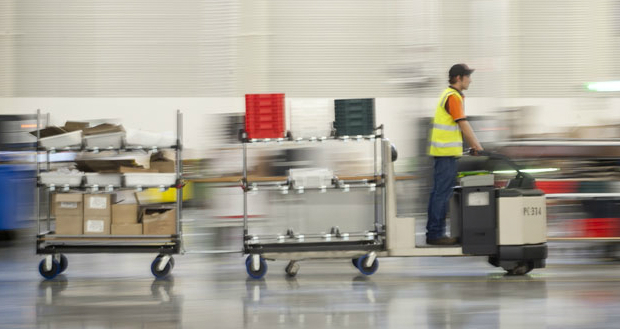
Lately it is not uncommon to hear printers complaining that all they read about in the industry is doom and gloom. Have a scan through any particular magazine issue from the trade press, including this one, and you are bound to find more than one article reporting that some business has gone bust, gone into administration, or shut their doors for good.
On the other hand, there are the articles about printers showcasing their latest sparkling investment, be it a new digital printer, finishing system or folding machine. With drupa just passed we have seen the likes of Heidelberg, Landa, HP, Xerox, and Fujifilm all offer their interpretation of ‘the forefront of technology’ which printers have eagerly snapped up to avoid missing out, sometimes even when the technology is years away from materialising.
With all this going on, it is conceivable that printers feel like they are caught in the middle. After watching some of their competitors take a nosedive, print business owners are fully aware that it can be a risky business and they may want to tread carefully. However on the flip side they feel pressured to invest a fortune of their money into a single piece of machinery in a bid to stay ahead of the game, which can be a massive risk.
A changing mindset
The good news is there is an alternative, trade printing, where in effect a printer buys time on someone else’s presses, which means there is no investment risk, no technology risk, no downtime risk, and it enables the printer to offer a broader range of services.
A new generation of trade printers are emerging to offer new services, which are based on provding such a level of service, quality and price that the smaller printshop can contemplate not even having any printing equipment on site. After all why take the financial risk, the stress of employing staff, the rent for floorspace, and the technology risk when you can just buy time on someone else's press, and with the new breed of trade printers you can order online, and they will deliver directly to your customer with product lavbelled as coming from you. They can even provide white label websites that you can use, in some cases for free, and they can enable you to enter entire new markets. Most trade printers will agree that growth is set to be a key theme for trade printing in the future, however Trent Nankervis, general manager of trade only printer CMYKhub has a more frank prediction. He has noticed a trend in his customers using trade printing to enter new markets such as wide format and says trade printers in future will need to offer every print service under the sun to service trade clients, including digital.
Nankervis says, “Printers and print resellers may be pigeonholed into a perception of what they do based on what they produced in the past. Now they can easily become solution based print resellers by sourcing additional products required to maintain the relationship.
He continues, “The future of trade printing will stay much the same. It is a very competitive space dominated by first to market technology which makes it challenging and rewarding at the same time.”
Chief executive of trade only digital and offset printer LEP, John Bromfield dismisses the notion that the recent rapid rise of trade printing is simply a fad, instead arguing that small printers with in-house production will soon be a thing of the past.
With services like LEP’s allowing clients to upload orders within minutes and have the print job arrive on their customer’s door step within days while still making a profit, Bromfield asserts that trade printing is here to stay because it is offers printers the tools to do business smart.
“The small printers that printed everything in-house are a dying breed; machines are ageing with outdated technology and are expensive to run especially, if you need to have a retail front and web presence too,” he says. “While digital technology has assisted many to keep some printing onsite, most small printers are evolving into print provider businesses to survive, using outsourcing to their advantage and reaching their customer base online like their competitors.”
For the sake of this argument, we invite you to read our buyers guide about the country's top trade print companies and what they can offer.
Transforming small to medium print businesses
A word often associated with trade printing is flexibility. The service is allowing small to medium businesses to be flexible in more ways than one. They can be flexible with how much work they choose to produce in-house and how much work they choose to outsource. One print business may have a wealth of knowledge in all facets of traditional print but little experience with wide format, so they may decide to outsource this. However another business could choose to outsource their entire production, which brings us to the endless possibilities the web has opened up for trade printing.
It was once unthinkable that a print business could survive without a physical manufacturing operation – the printing presses – but trade printing has opened up a new era of possibilities for printers, even allowing businesses to operate as online-only, saving the owner the cost and risk of buying a press, of renting out a premises, of hiring production staff, and all the other associated costs. Businesses which utilise trade printing can even run as a one man show removing the need to hire and pay wages for other staff.
Promoting a customised service is Melbourne based family business, Whirlwind Print. Having entered the trade printing business 16 years ago after experiencing firsthand what managing director Andrew Cester describes as ‘clumsy print quoting and ordering services in the industry’, its goal was to develop a service to make life easier for businesses in the graphic arts and print industry. Cester says Whirlwind sticks by the mantra still to this day by offering its customers simple to use web-based solutions as well as print. “We supply our customers with everything from software solutions to web portals, online print management software and print work, so we give our customers a lot more than just print.”
Alex Coulson, general manager of Sydney based, trade only printer Hero Print sums up the benefits for small printers well, “Anything that small printers are not particularly comfortable with, that is where trade printers come in,” he says.
“Trade printers are allowing small printers to be a little bit more nimble and just be able to focus on sales. They can work out of a relatively small shop with a small digital machine and still take on big jobs and not have to stress about them too much because they know they will be produced well and produced in a timely manner. Where there was once a fear in taking on big jobs it is something that is not too troublesome these days.”
Hero Print provides services in offset, digital and finishing, Coulson says finishing in particular is increasingly becoming an in-demand service within the trade as clients look to cut down on overhead costs. Coulson has noticed an increased uptake in specialised print jobs, which he says is also generating demand for new variations of finishing and embellishments.
He explains, “One thing that we have seen is a lot more work is becoming bespoke, and we are finding that we are offering more and more custom products. We really need to be able to offer that edge to our clients, so trade printing is going to become more of an art. It is no longer going to be about bashing out 50,000 brochures, it is becoming a case where customers are asking for a bound magazine with foil on the cover and embossing with a nice texture.”
Online or personalised service
Understanding how difficult it can be to use some web portals for online ordering, Whirlwind brought in its own client web portal W3P which allows trade customers to complete their order entirely through the web, in addition to its traditional face-to-face service. Cester says it is important for Whirlwind to offer both types of service to cater to the differing preferences of its trade clients.
“We like to meet our customers and get to know them but of course if they don’t want to, we don’t have to,” he explains. “But generally speaking we find it better to meet with our customers to understand who they are, understand their requirements and what we can do for them to help them grow and improve their business.”
Alex Coulson says a majority of its trade clients use the Hero Print website portal for their ordering and the company has also implemented a loyalty discount offer to encourage customers to use it. He says, “It really depends on the job, some jobs take a bit more nursing than others so there might be a bit more conversation around those but in a lot of cases they just go straight through our website. The customer can get the price for the work online, upload their order with their artwork and then they track their order from there as well.”
Three years ago Centrum Printing moved from being a commercial printer to a trade printer, and specifically a large format printer producing packaging and POS. A family owned company that has been operating for the past 25 years, Centrum first delved into trade printing to give the industry a helping hand.
Centrum general manager, Sandra Mascaro explains, “Getting into trade printing was pretty much about the fact that we wanted to help support and grow the industry and keep manufacturing alive in Australia. We knew with our technology – the big KBA press – we would be able to compete with international suppliers and our big aim is to provide future generations an opportunity in Australian manufacturing because we believe it is dying.
“We are trying to make printing more appealing for new generations as well and really by supporting the trade and resellers it is a good way of helping the industry. We offer them an outlet they can utilise without them making the investment in machinery.”
Trade printing refers to the process where a print business outsources work to a larger company within the industry. Small to medium sized businesses are steadily embracing the service and may call on it when they are faced with a print job that they cannot fulfil by themselves, either because they do not have the equipment or manpower.
Mascaro says trade printing is about shifting the mindset and viewing fellow print businesses as allies rather than the opposition. “It really is about respecting client relationships and working with each other’s technology and equipment because that way we can all target new markets, grow the industry and we all win at the end of the day,” she says. “Gone is the day where you see every printer as a competitor, we really need to embrace what each printer can do and work with that.”
However, Centrum has distanced itself from the world of online ordering in preference of emphasising its customer service through its hands-on client facing approach.
Comment below to have your say on this story.
If you have a news story or tip-off, get in touch at editorial@sprinter.com.au.
Sign up to the Sprinter newsletter



